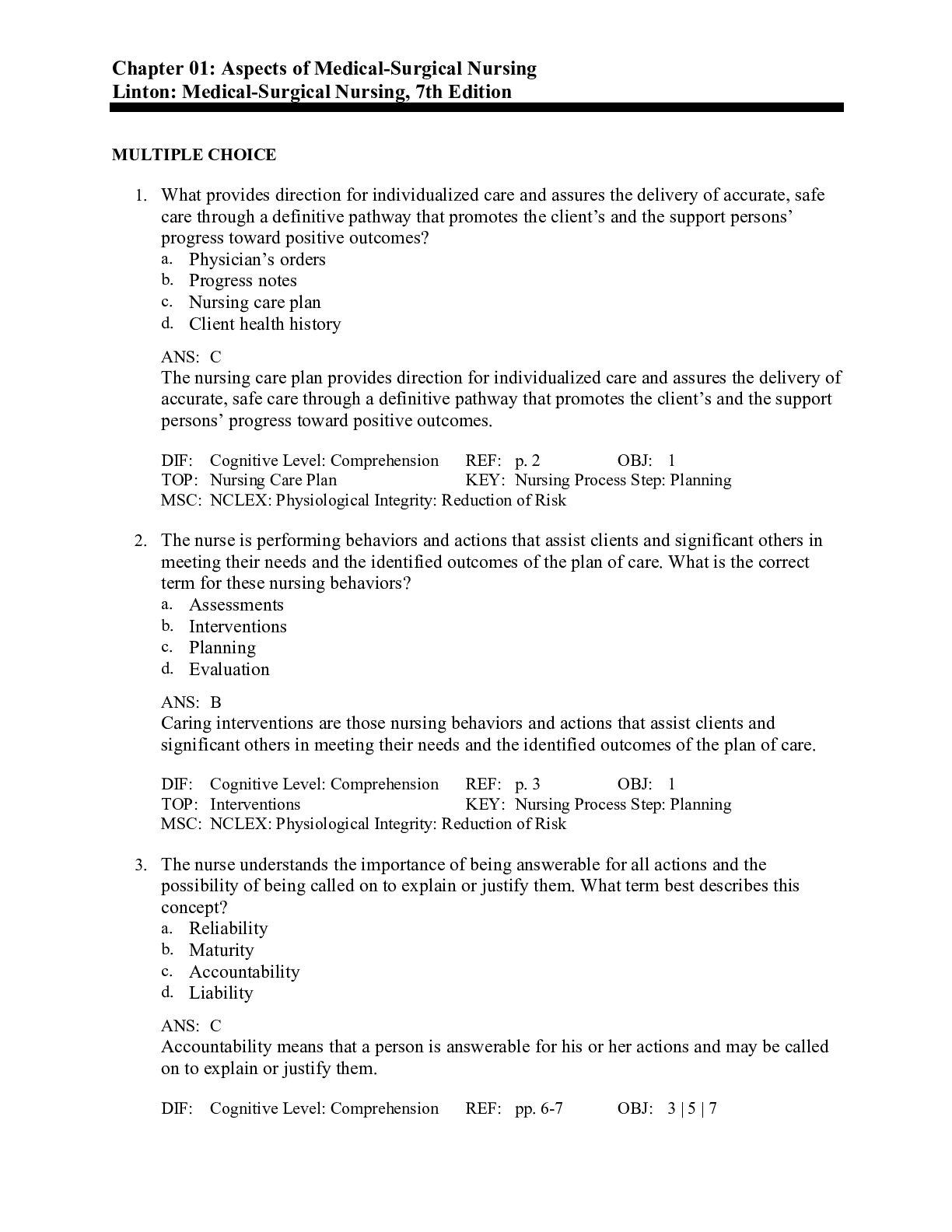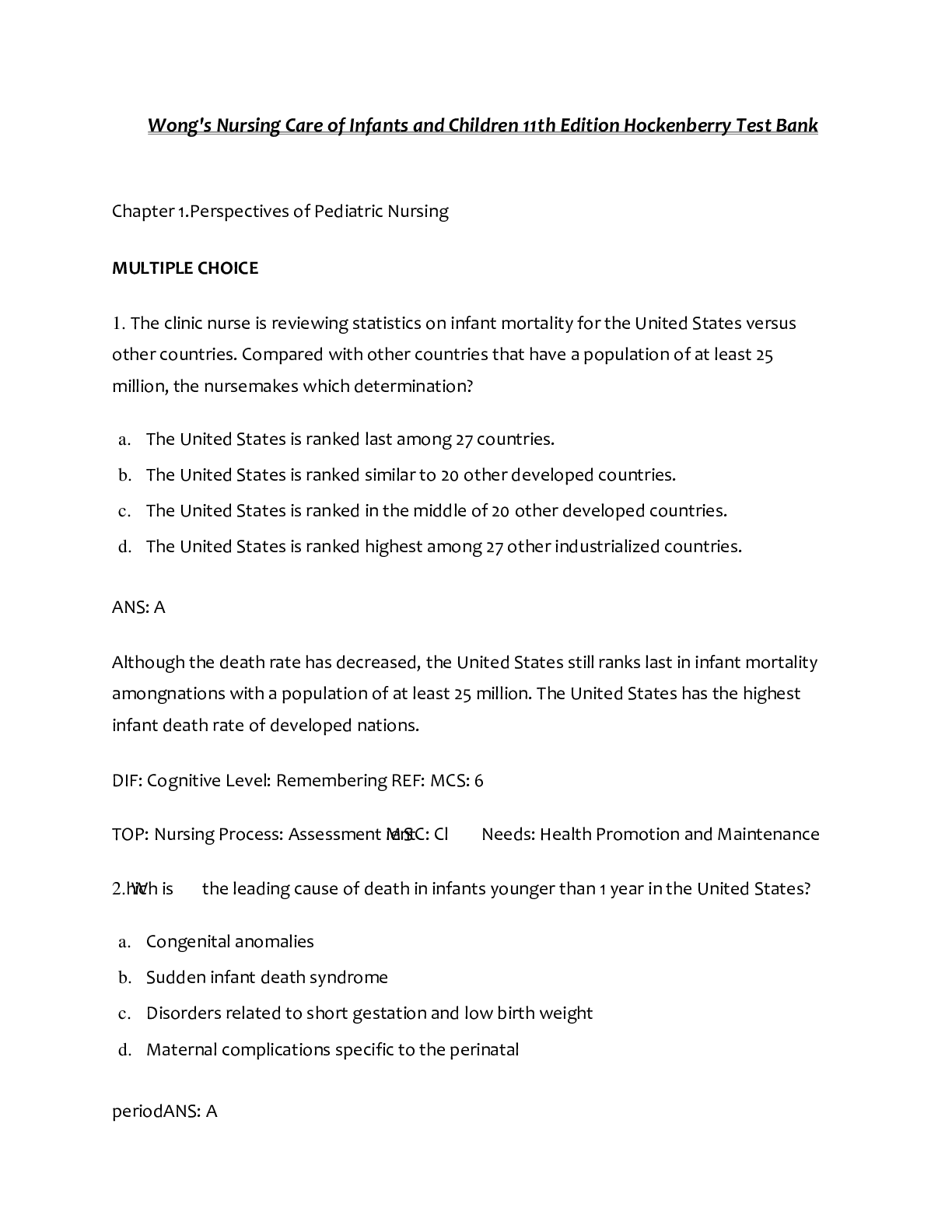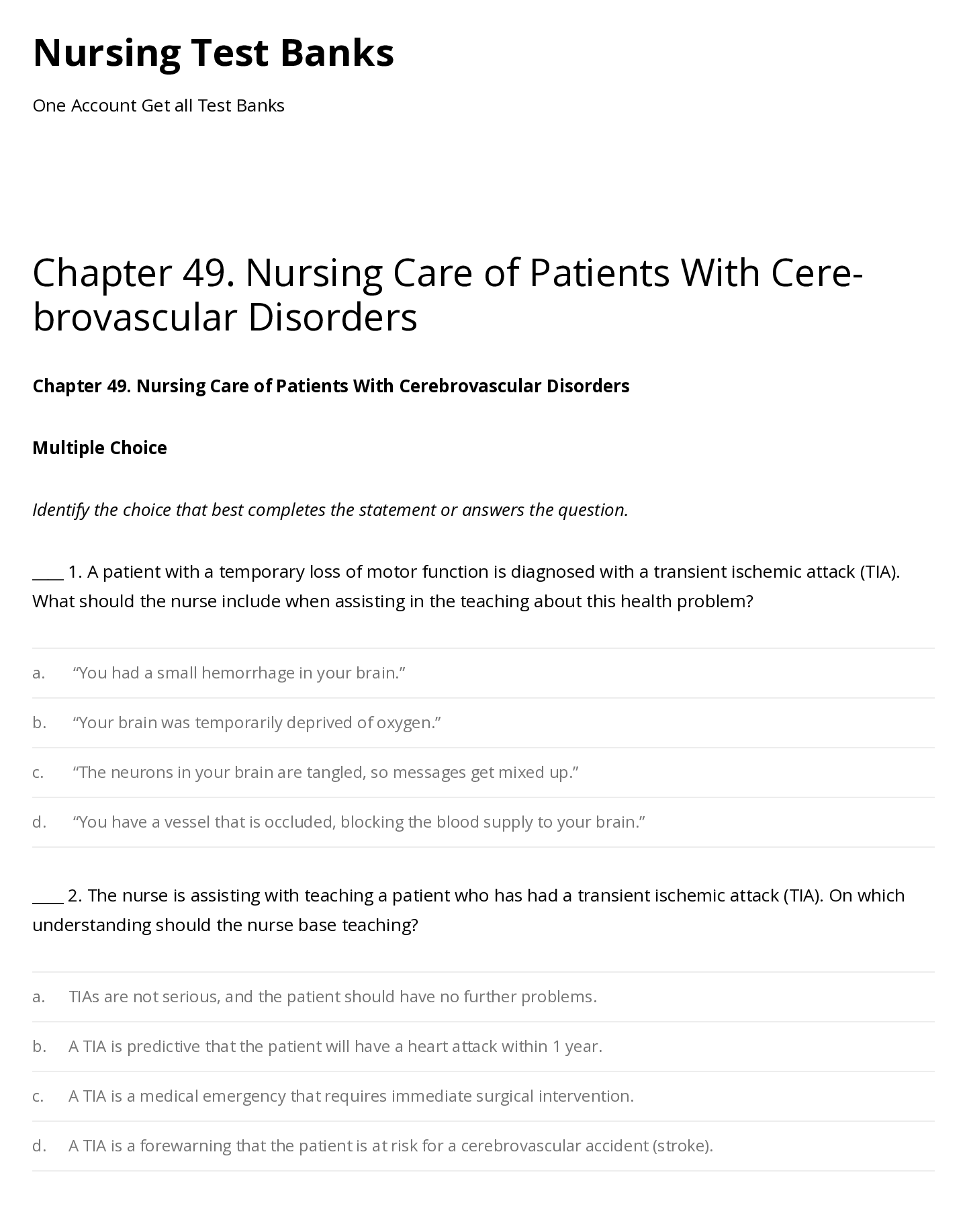*NURSING > TEST BANK > Chapter 52. Nursing Care of Patients With Sensory Disorders: Vision and Hearing (All)
Chapter 52. Nursing Care of Patients With Sensory Disorders: Vision and Hearing
Document Content and Description Below
MULTIPLE CHOICE 1. The nurse is collecting information from a patient who reports difficulty seeing the print in the newspaper. The patient is 50 years of age and does not have any condition that re... quires medical management. Which vision condition does the nurse suspect the patient is experiencing? 1. Myopia 2. Presbyopia 3. Astigmatism 4. Emmetropia ANS: 2 Chapter: Chapter 52. Nursing Care of Patients With Sensory Disorders: Vision and Hearing Objective: Explain the etiologies, signs, and symptoms of each sensory disorder. Page: 1119 Heading: Refractive Errors Integrated Process: Clinical Problem-Solving Process (Nursing Process) Client Need: Physiological Integrity—Physiological Adaptation Cognitive Level: Analysis (Analyzing) Concept: Sensory Perception Difficulty: Moderate Feedback 1 Myopia (nearsightedness) is when items up close can be seen clearly and distant objects are unclear. It is caused when the eyeball is elongated and light rays focus in front of the retina. 2 Presbyopia is a condition related to aging and occurs when the lens of the eye loses elasticity. The lens is less able to focus light onto the retina to see close objects. The condition occurs around age 40 and is likely this patient’s visual difficulty. 3 Astigmatism is caused by uneven curvatures on the cornea causing the light rays to be focused on two different points of the retina. The person with astigmatism will experience blurred vision with distortion. The cause can be from trauma, inflammation, or an autosomal dominant trait. 4 Emmetropia is the term used to define good vision. PTS: 1 CON: Sensory Perception 2. The nurse is visiting the home of a patient diagnosed with visual impairment related to macular degeneration. Which observation indicates to the nurse the patient is adjusting to the condition? 1. The patient is in nightclothes in the middle of the afternoon. 2. The patient is moving about in the apartment without problems. 3. The patient’s refrigerator contains only condiments, eggs, and milk. 4. The patient has stacks of unopened mail on the kitchen table.ANS: 2 Chapter: Chapter 52. Nursing Care of Patients With Sensory Disorders: Vision and Hearing Objective: Plan nursing care for patients with disorders of the eye or ear. Page: 1127 Heading: Nursing Process for the Patient With Visual Impairment Integrated Process: Clinical Problem-Solving Process (Nursing Process) Client Need: Physiological Integrity—Reduction of Risk Potential Cognitive Level: Analysis (Analyzing) Concept: Sensory Perception Difficulty: Moderate Feedback 1 With a visually impaired patient, the goal is for independence in performing the activities of daily living. The nurse needs to determine the reason that the patient is not dressed in the middle of the afternoon. 2 When the nurse observes the patient’s ability to move about the apartment without difficulty, it is an indication that the patient can be safe and independent in the patient’s environment. 3 The nurse expects to see more in the patient’s refrigerator than condiments, eggs, and milk. The nurse needs to determine how the patient is meeting nutritional needs. 4 When the nurse sees piles of unopened mail on the patient’s kitchen table, the nurse needs to explore the patient’s ability to read and care for personal matters. PTS: 1 CON: Sensory Perception 3. A patient with acute angle glaucoma and a fractured femur that is scheduled for surgery is prescribed the preoperative medications morphine 10 mg intramuscularly (IM) and atropine 0.4 mg IM. Which action does the nurse take? 1. Hold the morphine. 2. Contact the physician. 3. Give medications as ordered. 4. Collect data on patient’s pain. ANS: 2 Chapter: Chapter 52. Nursing Care of Patients With Sensory Disorders: Vision and Hearing Objective: Identify medications contraindicated for patients with acute angle-closure glaucoma. Page: 1124 Heading: Glaucoma Integrated Process: Clinical Problem-Solving Process (Nursing Process) Client Need: Physiological Integrity—Reduction of Risk Potential Cognitive Level: Analysis (Analyzing) Concept: Sensory Perception Difficulty: Moderate Feedback 1 There is no reason to hold the morphine.2 Atropine is contraindicated for patients with acute angle glaucoma. It can cause blindness if given so the physician must be notified. 3 Giving the medications could cause blindness in the patient. 4 The morphine is not being given for pain but rather for preoperative preparation. PTS: 1 CON: Sensory Perception 4. The nurse is reinforcing teaching provided to a patient with open-angle glaucoma. What is most important for the nurse to include in the patient teaching? 1. Regardless of treatment, peripheral vision will be eventually lost. 2. Compliance with drug therapy is essential to prevent loss of vision. 3. Damage to the eye caused by glaucoma is reversible in early stages. 4. Eye pain is experienced until the optic nerve atrophies, causing blindness. ANS: 2 Chapter: Chapter 52. Nursing Care of Patients With Sensory Disorders: Vision and Hearing Objective: Explain the etiologies, signs, and symptoms of each sensory disorder. Page: 1124 Heading: Gl [Show More]
Last updated: 2 years ago
Preview 1 out of 17 pages
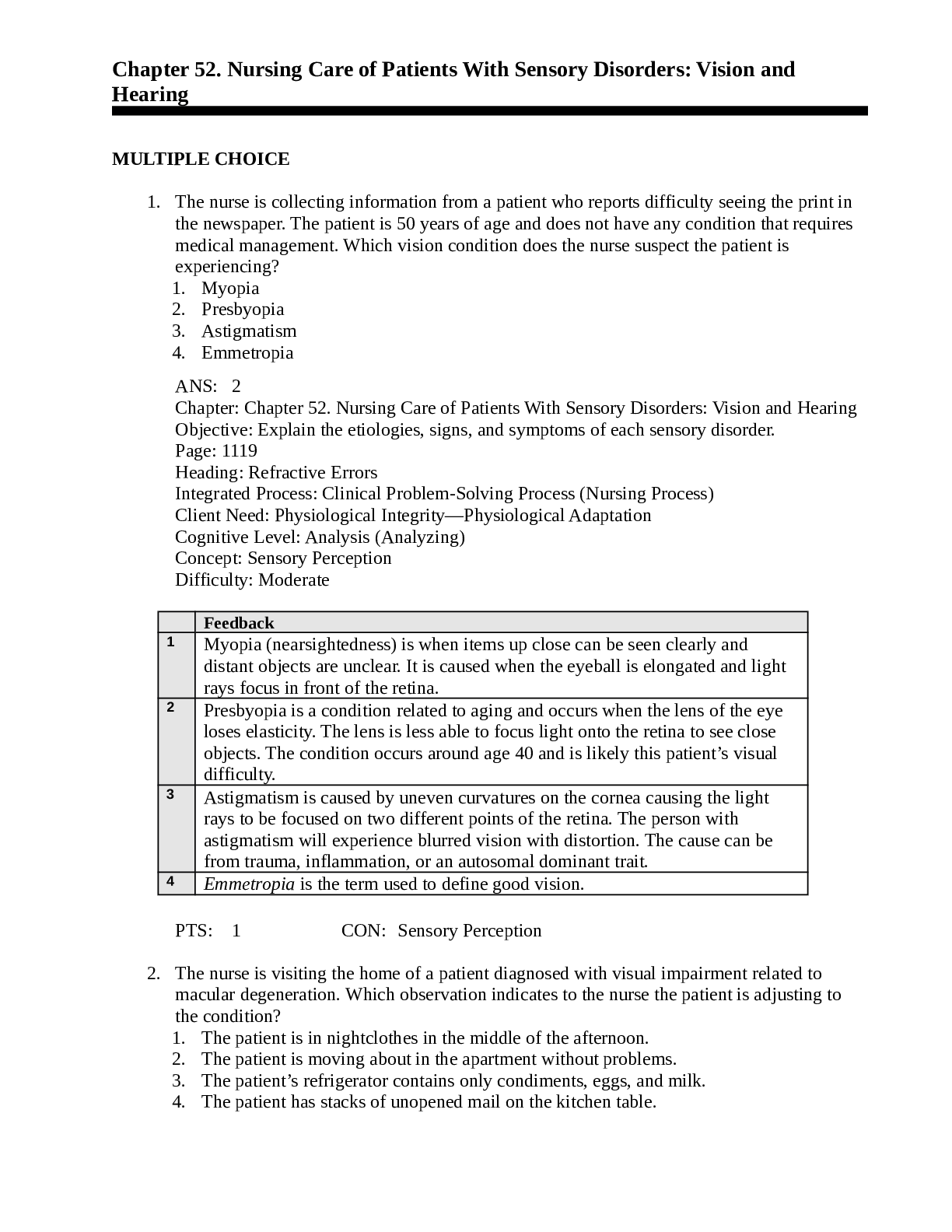
Buy this document to get the full access instantly
Instant Download Access after purchase
Buy NowInstant download
We Accept:

Reviews( 0 )
$10.00
Can't find what you want? Try our AI powered Search
Document information
Connected school, study & course
About the document
Uploaded On
Apr 15, 2021
Number of pages
17
Written in
Additional information
This document has been written for:
Uploaded
Apr 15, 2021
Downloads
1
Views
192

.png)

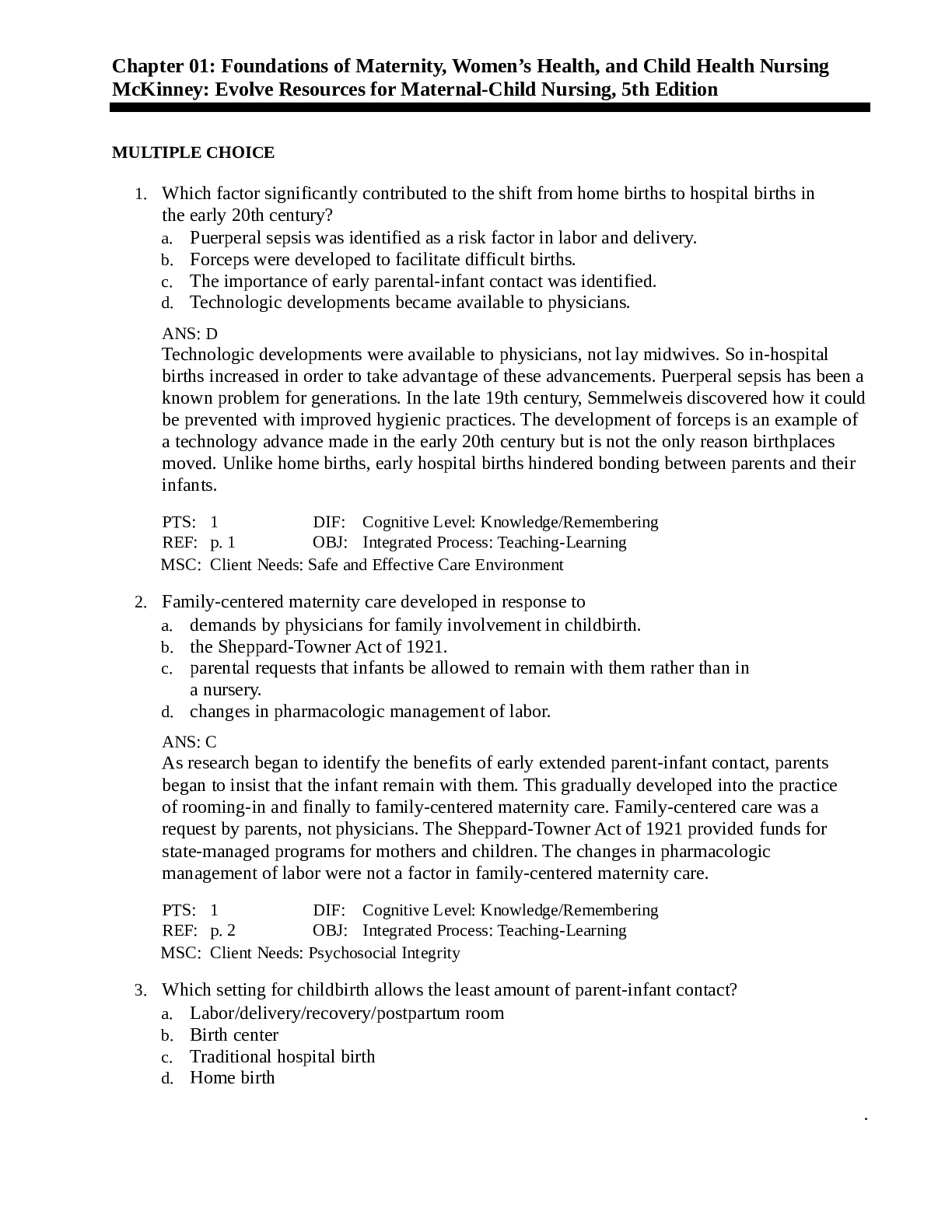
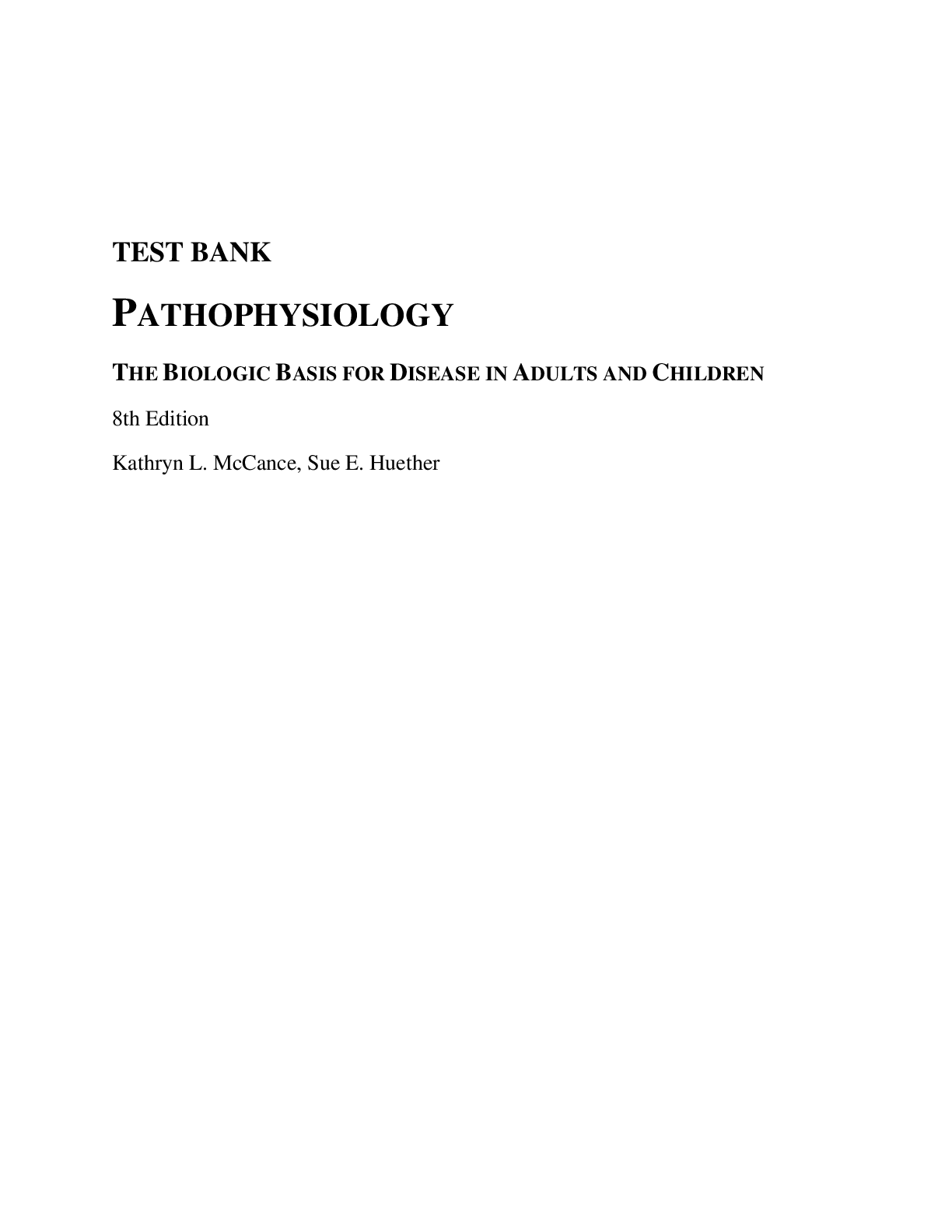



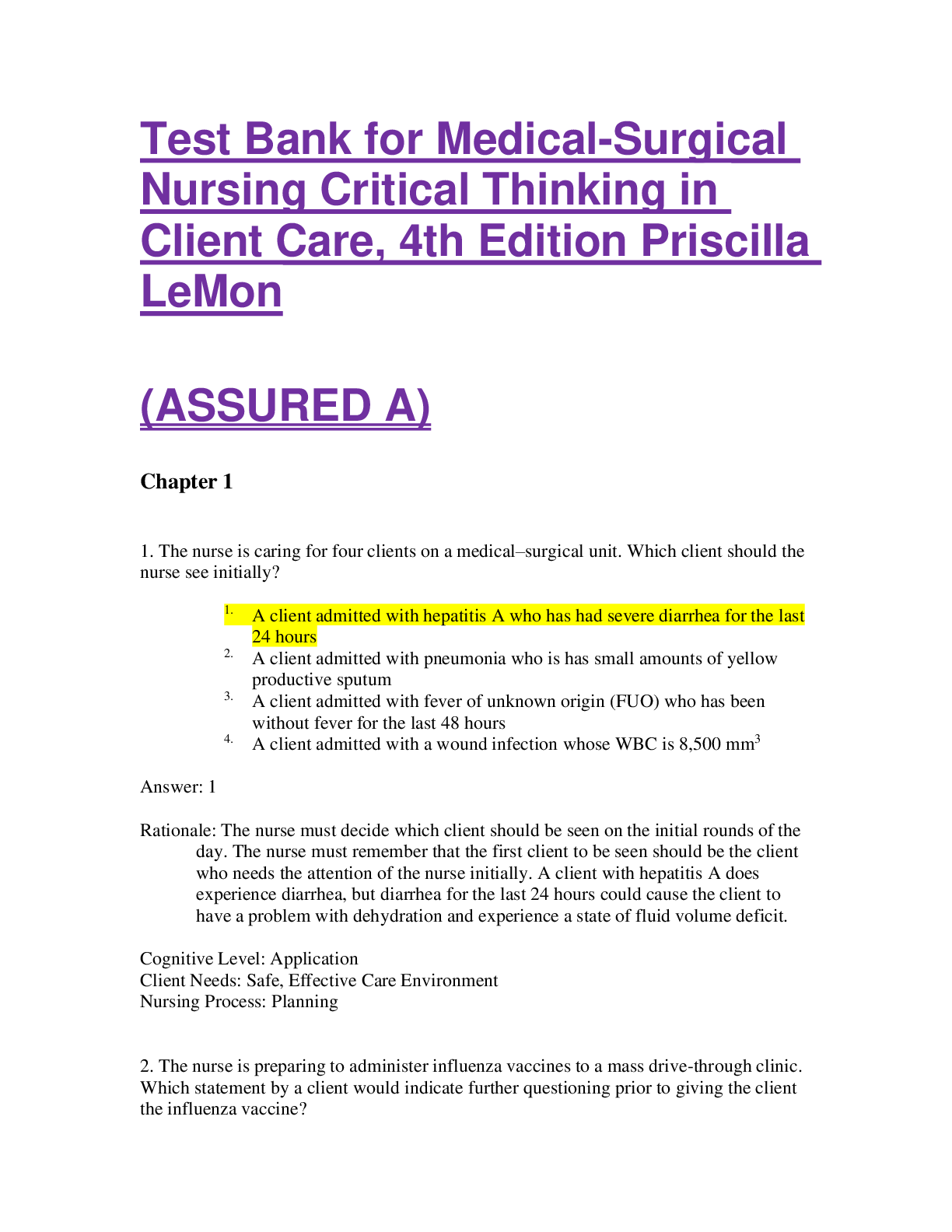
.png)


